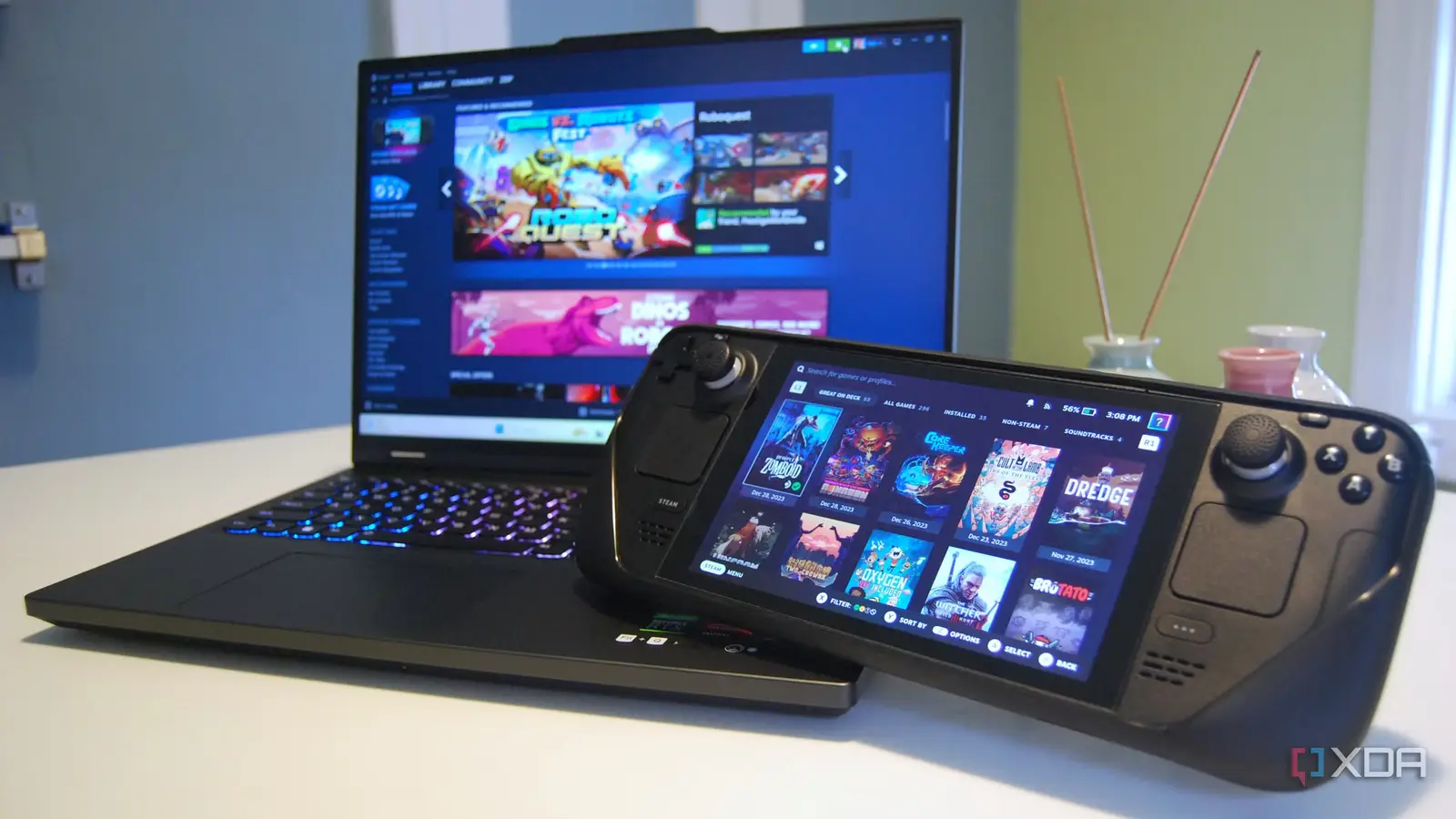Copyright XDA Developers

It's no secret that we at XDA love the Steam Deck and a good home lab. So it was inevitable we'd find a way to combine them both. In fact, we've already used a Steam Deck as a home server. But that's far from the only use for a Steam Deck in your home lab environment. While you can certainly run a server from your Steam Deck or use it to run VMs, you can also use the Deck for a thin client if you've already got an existing home lab server. And that just might be the best hybrid use for your Steam Deck, since it lets you keep using it for gaming. The Steam Deck is inherently portable You can use it literally anywhere Because the Steam Deck was designed as a handheld gaming PC, it's more portable than most devices you'll have in your home lab. Sure, an older, ultra-thin, and light laptop is also very portable, but it's not quite as portable as a Steam Deck. You still need a flat surface to set a laptop down on, because trying to type on a laptop and hold it midair is the kind of thing comedy sketches are made of. Meanwhile, handhelds like the Steam Deck are designed to be used in your hands, no table or lap required. This makes your Steam Deck an ideal thin client, since it can easily become a home lab display at any location, at any time. Whether you're using it as a remote display or a home lab dashboard, your Steam Deck can be your home lab's thin client wherever you go, with no accessories needed. The Steam Deck has enough power You can easily run the virtual environments of your choice The Steam Deck may be a bit less powerful than other handheld gaming PCs, but it's more than capable of managing your homa lab, Docker containers, Kubernetes automations, and self-hosted apps considering all of that still runs on your server. And for what it's worth, a Steam Deck can even function as a full home server if you don't already have a server rigged up from an older PC. While heavy enterprise-class data centers are great at visualization and AI workloads, you don't really need that much computing power in your home lab. But if you just need a good portable thin client for your home lab's virtual environment, the Steam Deck's APU is perhaps more powerful than you need. However, since Valve opted for a small, 4-core CPU and a 4-core GPU custom chip, it's not a waste of computing power to use a Steam Deck instead of a tablet or an old laptop as your home lab's thin client. It's certainly useful as an access point to your home server or server VM, but it can also run additional environments on its own hardware, which makes the Steam Deck a better option than a portable monitor for your remote server display. You'll get better battery life than you think Without gaming, the Steam Deck's small battery isn't much of a problem The Steam Deck doesn't have a massive battery built into its tiny chassis. So when you're gaming on the Steam Deck, you're limited to just a few hours of battery life in between charges. However, using your Steam Deck as a home lab thin client means you aren't really taxing the system. So you can get significantly better battery life from the Steam Deck when used as a regular PC or home lab component than when gaming. And with the Steam Deck's sleep mode, that could mean you get days of use on a single charge. After all, you aren't running your home lab thin client 24/7 in most cases. So if you're just making a few small tweaks or peaking in on your home lab server, you can go days between charges when using the Steam Deck as a thin client or home lab dashboard. And you can still game As a thin client, you don't need to remove your game files While a professional thin client is pretty bare-bones outside the VM software used to access the hub server, you don't need to be quite so severe with your device partitioning in a home lab. Especially if you're building a home lab on a tight budget. The Steam Deck makes a great thin client for your lab since it's portable, powerful, and efficient. But using it as a thin client is also a great way to get a secondary use out of your Steam Deck without replacing its primary purpose as a gaming handheld. Sure, you'll need some VM software to remote into your home lab server, and you may want additional software to run home lab automations, but those programs don't take up much storage space. Which means you can still keep your games installed and game on your Steam Deck in between home lab VM sessions. If you want to keep an additional layer of separation between the two purposes for your Steam Deck, you can keep your home lab software and game software on separate microSD cards, with the Deck's internal drive running just the base software. This is probably more complex than you honestly need, but if you're worried about cross-contamination, this is one way to keep your lab virtual environment extra clean.



